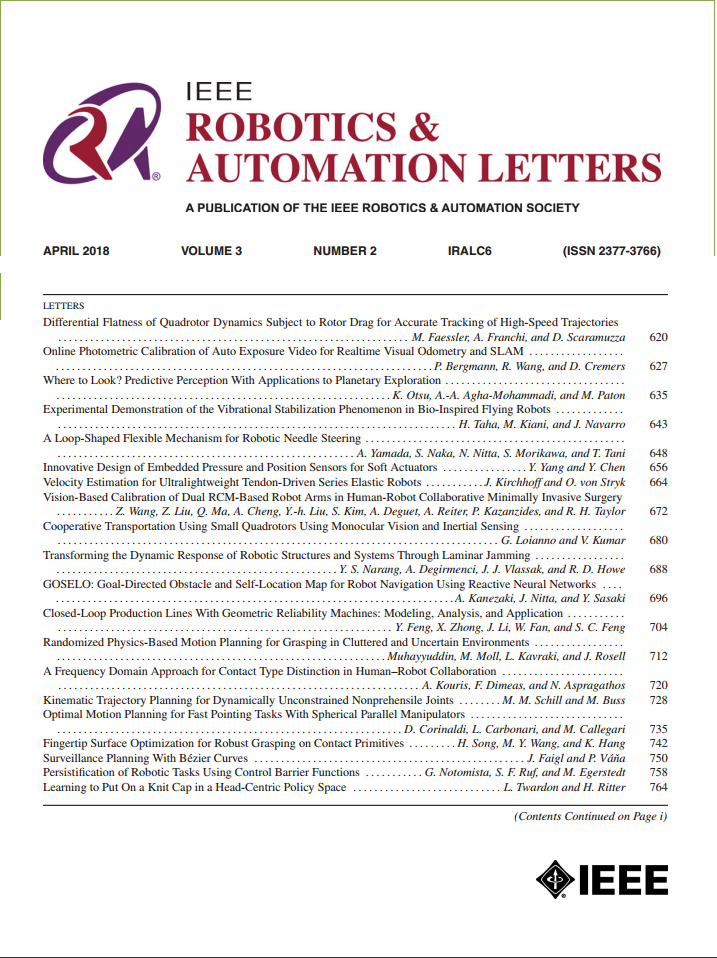利用地铁定位任务探索深度网络特征的简化极限
IF 4.6
2区 计算机科学
Q2 ROBOTICS
引用次数: 0
摘要
本文研究了基于视觉的地铁定位,这是一项重要但具有挑战性的任务,因为隧道中光照不足,纹理稀疏。传统的特征与时间对应作斗争。虽然深度网络特性是有效的,但其计算和存储需求使其不适合车载系统。我们提出了一个结构简单的特征提取器,通过学生-教师蒸馏框架进行训练,以继承深度网络强大的模式挖掘和抽象能力。我们的目标是简化地铁定位等固定路线应用的深度网络特征,为实际应用开发一种高效的车载特征提取器。具体来说,我们设计了一个单层卷积算子作为我们的学生网络。通过判别增强蒸馏,我们将最先进的特征提取能力压缩到这个紧凑的模型中,实现了描述能力和计算效率之间的最佳平衡。该方法实现了2 KB的模型大小和1453 FPS的处理速度,同时保持了与深度网络特征相当的高单应性估计精度。在基于视觉的地铁定位数据集上进行的大量实验表明,我们的方法在不损失准确性的情况下具有优越的速度和可部署性。本文章由计算机程序翻译,如有差异,请以英文原文为准。
Exploring the Simplification Limit of Deep Network Features With Subway Positioning Task
This paper addresses vision-based subway positioning, a significant yet challenging task due to the low-lighting and sparse-texture conditions in tunnels. Traditional features struggle with temporal correspondence. While deep network features are effective, their computational and storage demands make them unsuitable for on-board systems. We propose a simple-structured feature extractor, trained via a student-teacher distillation framework to inherit the powerful pattern mining and abstraction capabilities of deep networks. Our goal is to simplify deep network features for fixed-route applications like subway positioning, developing an on-board efficient feature extractor for practical applications. Specifically, we design a single-layer convolution operator as our student network. Through discriminability augmented distillation, we compress the feature extraction capabilities of the state-of-the-art SiLK into this compact model, achieving an optimal balance between descriptive power and computational efficiency. Our method achieves a model size of 2 KB and a processing speed of 1453 FPS, while maintaining high homography estimation accuracy comparable to those of deep network features. Extensive experiments on the vision-based subway positioning dataset show our method offers superior speed and deployability without losing accuracy.
求助全文
通过发布文献求助,成功后即可免费获取论文全文。
去求助
来源期刊

IEEE Robotics and Automation Letters
Computer Science-Computer Science Applications
CiteScore
9.60
自引率
15.40%
发文量
1428
期刊介绍:
The scope of this journal is to publish peer-reviewed articles that provide a timely and concise account of innovative research ideas and application results, reporting significant theoretical findings and application case studies in areas of robotics and automation.
 求助内容:
求助内容: 应助结果提醒方式:
应助结果提醒方式:


